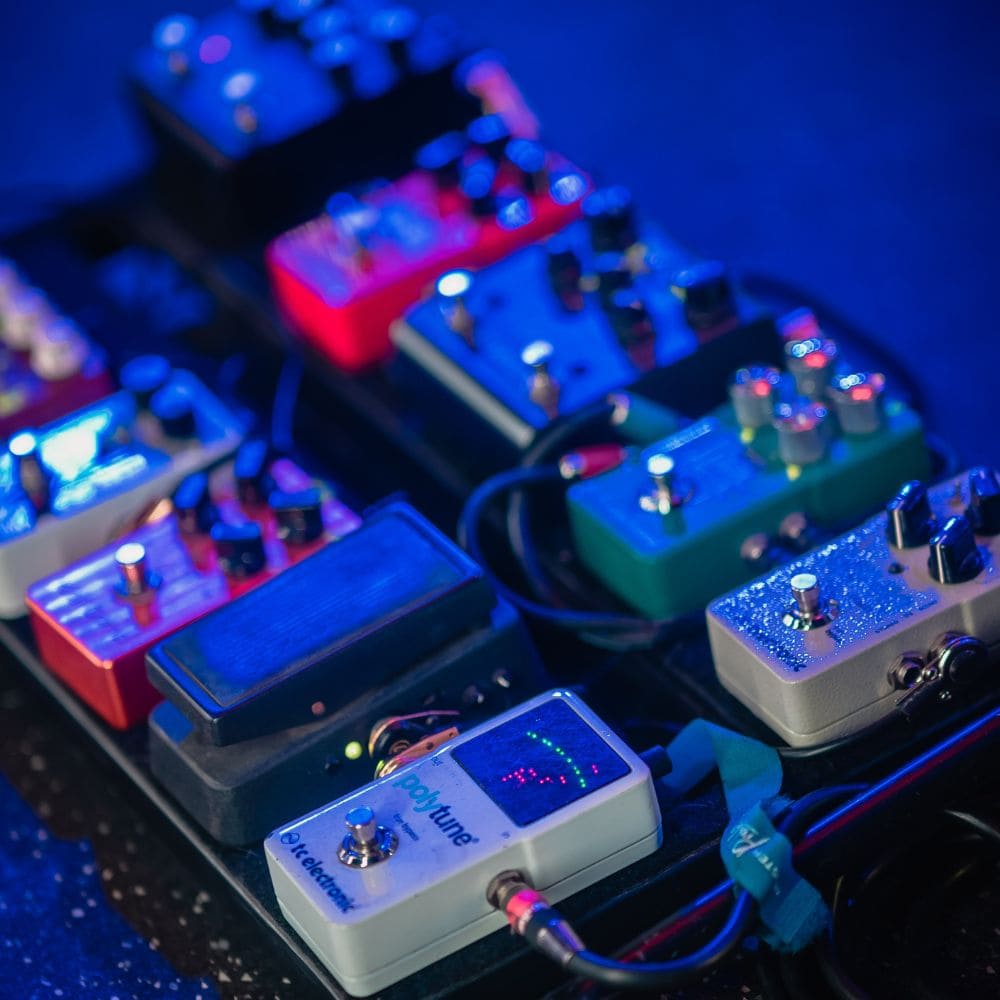How Many Pedals Before You Need a Buffer?

Welcome to our comprehensive guide on buffers and their role in guitar pedal rigs. Whether you're a seasoned guitarist or just starting out, understanding the importance of buffers in your pedalboard setup is crucial.
In this article, we'll delve into what buffers are, their effects on guitar signal, the need for a buffer, and how to choose the right buffer pedal for your setup. Let's explore the world of buffers and pedals to ensure your guitar's tone remains pristine.
What is a Buffer?
A buffer in the context of guitar pedals is an active electronic circuit that helps maintain the strength and integrity of the guitar signal as it travels through the pedalboard. It counteracts the signal degradation caused by capacitance in the cables and the input impedance of subsequent pedals.
Essentially, a buffer ensures that the signal remains robust and retains its tone as it passes through the pedal chain.
Effects of Pedals on Guitar Signal
When multiple pedals are interconnected in a signal chain, they can introduce impedance mismatch and signal degradation, resulting in tone loss and high-end roll-off. This effect is especially noticeable with long cable runs and true-bypass pedals. The cumulative capacitance of the cables and the input impedance of subsequent pedals lead to a loss of high-frequency content and a decrease in overall signal strength.
When considering the effects of pedals on a guitar signal, it's important to delve into the specific factors that contribute to these changes. The following are key elements to be mindful of:
- Cable Length: Longer cable runs can introduce additional capacitance, leading to a loss of signal strength and high-frequency content.
- Impedance Mismatch: Different pedals may have varying input and output impedances, creating impedance mismatches that result in signal degradation.
- Cumulative Capacitance: The combined capacitance of multiple cables in the signal chain adds to the overall capacitance, affecting the high-end frequencies of the guitar signal.
- True-Bypass Pedals: While often designed to minimize tone alteration when disengaged, true-bypass pedals can still contribute to impedance and capacitance interactions within the signal path.
Impedance mismatch between pedals can lead to a range of tonal alterations, including:
- Loss of high-frequency content
- High-end roll-off
- Decrease in overall signal strength
Understanding these specific effects can aid in identifying and addressing any tone loss that occurs within the pedalboard setup.
When Do You Need a Buffer?
A buffer is needed in your signal chain when multiple pedals, combined with the length of cables and impedance characteristics, lead to a noticeable degradation in tone and signal strength. Here are some common scenarios when you may need a buffer:
- Engaging multiple pedals causes a loss of high-end frequencies and clarity in your guitar tone.
- Using long cable runs results in signal loss and degradation.
- High impedance interactions between your guitar and pedals lead to tone deterioration.
When you encounter any of these situations, adding a buffer to your setup can address these issues and maintain the integrity of your guitar's signal.
Answer to the Question
When considering how many guitar effects pedals you can have in your setup before needing a buffer pedal, several factors come into play.
The primary factors include the length of the cable runs, the types of pedals used, and the input impedance of the amplifier.
As a general guideline, if your guitar signal path includes more than four or five pedals, it is advisable to introduce a buffer pedal to maintain signal integrity and prevent any loss of high-frequency content.
Choosing the Right Buffer Pedal
When it comes to choosing the right buffer pedal for your pedalboard, there are several important factors to consider. Let's delve into the details to ensure you make an informed decision:
- Placement: Consider where the buffer pedal will be placed within your signal chain. Placing it at the beginning or end of your pedalboard can significantly impact its effectiveness in maintaining signal integrity.
- Compatibility: Check the compatibility of the buffer pedal with the other pedals in your setup. Ensure that it complements the tonal characteristics and impedance requirements of your existing pedals.
- Output Impedance: Look for a buffer pedal that offers low output impedance to effectively drive long cable lengths without degrading the signal quality. This is crucial for preserving the high-frequency content of your guitar signal.
- Signal Integrity: The buffer pedal should maintain the natural tone and clarity of your guitar signal even when driving multiple pedals and long cable runs.
- Power Requirements: Take into account the power supply needs of the buffer pedal. Some buffer pedals may require specific voltage or current, so it's essential to ensure compatibility with your existing power source.
Furthermore, it's beneficial to consider the specific scenarios in which a buffer pedal can greatly impact your overall tone and signal chain performance:
- Cable Length: When using lengthy cables in your setup, a buffer pedal can mitigate the signal loss and high-end roll-off caused by cable capacitance, preserving the clarity and brightness of your guitar's tone.
- Complex Signal Chain: If you have a complex pedalboard setup with numerous true-bypass pedals and long cable runs, a buffer pedal can retain the original guitar tone and prevent the accumulation of high-frequency losses.
- High-Impedance Pickups: For guitars with high-impedance pickups, a buffer pedal can prevent the loss of high-frequency content and maintain consistent tonal characteristics throughout the signal chain.
By carefully considering these factors and scenarios, you can select a buffer pedal that not only preserves the integrity of your guitar signal but also enhances the overall performance of your pedalboard setup.
Conclusion
In conclusion, understanding the role of a buffer pedal in your guitar signal chain is crucial for achieving the best sound possible. As we have discussed, pedals can have a significant impact on your guitar's signal, and a buffer pedal can help maintain the integrity of that signal.
While there is no set rule for when you need a buffer, it is important to pay attention to any changes in your tone and consider adding a buffer if you notice any negative effects. When choosing a buffer pedal, be sure to consider factors such as impedance, placement in your signal chain, and any additional features that may benefit your specific setup.
As a musician, it is important to constantly evaluate and improve your gear to achieve the best sound possible. By understanding the role of a buffer pedal and choosing the right one for your setup, you can ensure that your guitar signal remains strong and clear throughout your entire signal chain.
Don't let your tone suffer from a lack of knowledge about buffers – take the time to experiment and find the right buffer pedal for you.
*FYI, when you make a qualifying purchase through one of our links, we might receive a small commission from Amazon or other retailers, at no additional cost to you, which helps us to fund this site. It's a way to find what you're looking for while supporting us in the process!
